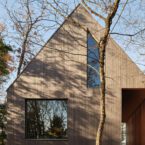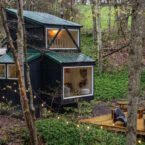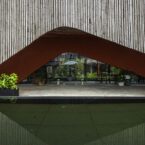
Minimaliste’s latest addition to their Noyer line, the 2024 Noyer XL, represents a leap forward in the realm of luxurious micro-living. Designed to withstand diverse weather conditions, including extreme temperatures, this tiny home offers a blend of functionality and comfort. With its extended length of 38.5 feet and width of 10.5 feet, the Noyer XL surpasses its predecessors, offering a more spacious interior while requiring a permit for road towing. Clad in a sleek combination of horizontal cedar and vertical steel, the exterior exudes modernity and durability, resting on a sturdy triple-axle trailer. Upon entering, residents are greeted by a thoughtfully laid out living space, seamlessly integrating a cozy kitchen, complete with ample storage, a fridge/freezer, oven, and propane-powered stove, alongside a comfortable seating area and entertainment center.
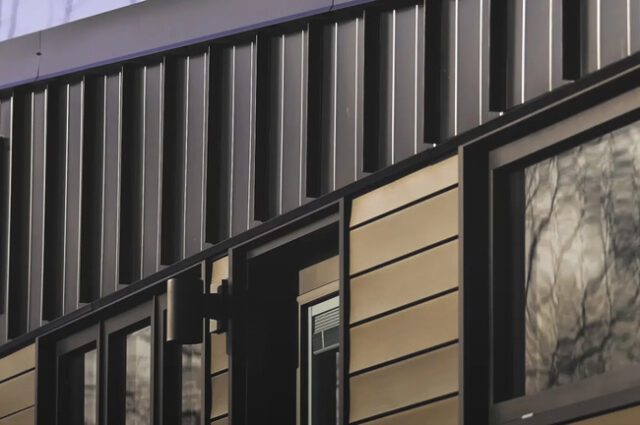
The innovative design of the Noyer XL prioritizes storage, featuring underfloor compartments and functional shelving throughout the home. A separate hallway houses a washing machine and dryer, enhancing convenience for residents. The bathroom, albeit compact, offers all the essentials, including a flushing toilet, shower, and vanity sink unit. Sleeping arrangements cater to both downstairs and upstairs preferences, with the former boasting generous headroom and a spacious wardrobe, while the latter, accessible via a storage-integrated staircase, offers a loft-style retreat. Minimaliste’s meticulous attention to detail and commitment to maximizing space ensure that the Noyer XL provides a luxurious micro-living experience without compromising on comfort or functionality.
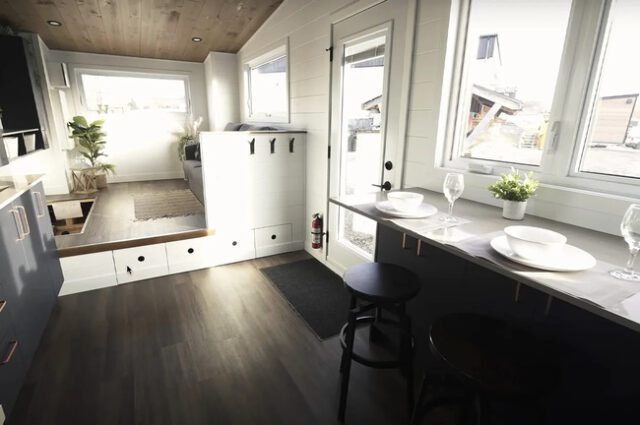
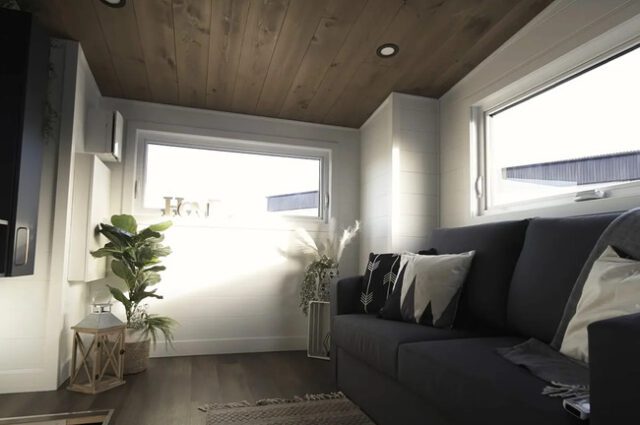

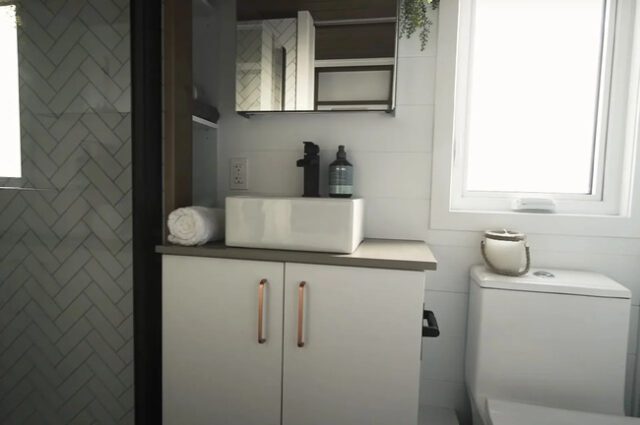

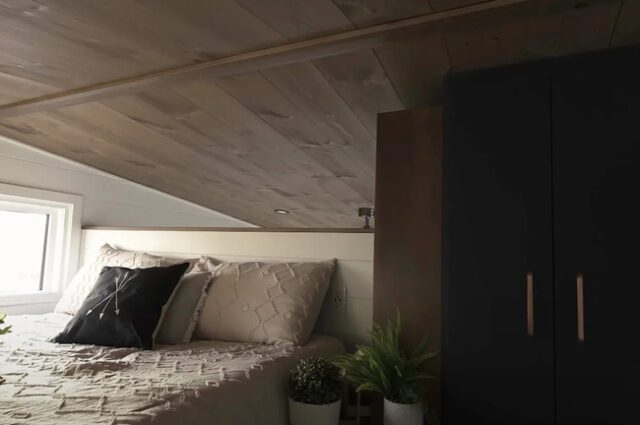

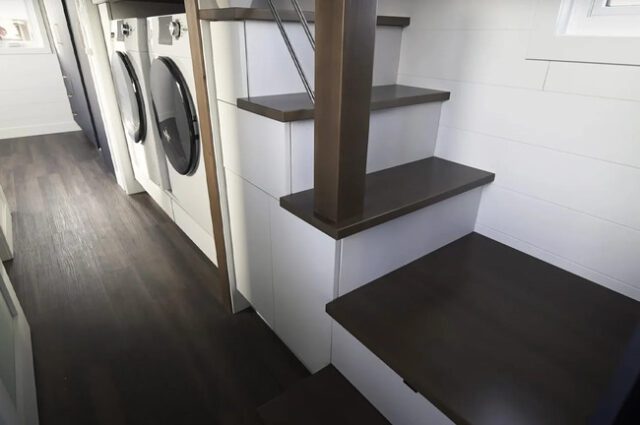

Bob Dunlop’s heartwarming tale of friendship with a young fox touches on the tender intersection of compassion and wildlife stewardship. Observing the fox’s ailment, Dunlop’s innate empathy prompted him to intervene, seeking not just to heal her physical wounds but to nurture a bond that transcends species barriers. His dedication to her well-being, diligently administering treatments and providing sustenance, exemplifies the profound connection humans can forge with the natural world.

As their friendship deepened, Dunlop remained mindful of maintaining the fox’s wild instincts, recognizing the importance of allowing her to reclaim her place in the wilderness. Despite the inevitable bittersweetness of letting go, he acknowledges the necessity of her rewilding, a testament to his reverence for her innate wildness. Yet, amidst this transition, the echoes of their bond linger—a testament to the enduring impact of kindness and the hope that one day, the fox may find herself nurturing her cubs, perpetuating the cycle of resilience and compassion in the wild.
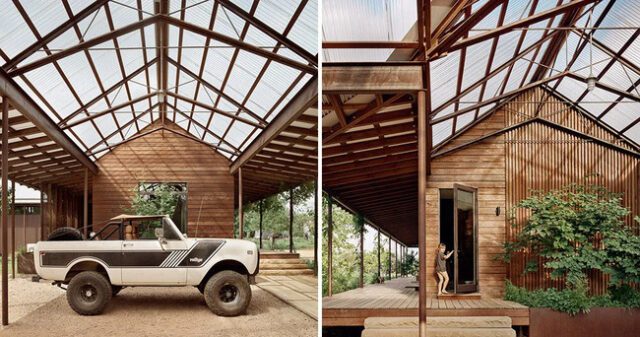
Roam Ranch, a testament to Baldridge Architects’ innovative prowess, emerges as a harmonious blend of modern design and rustic charm amidst the sprawling landscapes of rural Texas. Nestled on a working ranch just outside Fredericksburg, this 4,362-square-foot abode not only reflects the contemporary aesthetic but also pays homage to its surroundings. Collaborating once again with Baldridge Architects, the visionary clients sought refuge from urban rigors, envisioning a sanctuary that seamlessly integrates with their sustainable agricultural pursuits on the ‘Force of Nature’ ranch. Beyond mere living quarters, the dwelling needed to accommodate their entrepreneurial endeavors, including podcasting and educational events. Guided by this dynamic vision, Baldridge Architects embarked on a journey to craft a space that not only honored Roam Ranch’s heritage but also facilitated modern functionality.
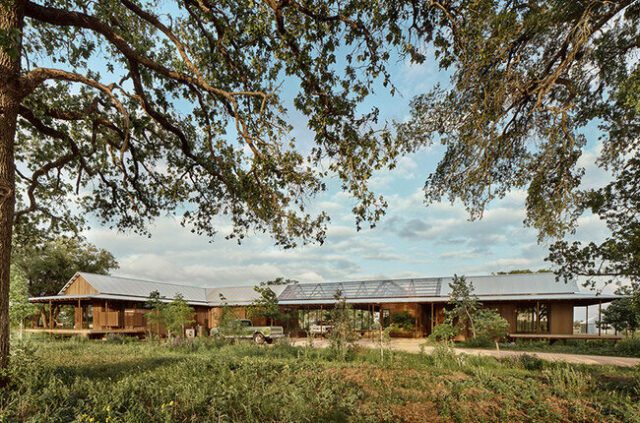
Intricately weaving together the old and the new, the architects orchestrated a symphony of design elements that resonate with both tradition and innovation. The resulting architectural marvel pays homage to the timeless Central Texas ‘dog-trot‘ house while embodying contemporary sophistication. With meticulous attention to detail, the team navigated logistical challenges, ensuring uninterrupted occupancy during construction, even with the arrival of a newborn. From the unified roofline to the raw stone hearth seamlessly integrated into the floor, every aspect of Roam Ranch reflects a thoughtful synthesis of form and function. As daylight filters through the corrugated polycarbonate panels, illuminating the space within, the dwelling stands as a testament to Baldridge Architects’ unwavering commitment to creating spaces that are not only visually stunning but also deeply rooted in their context and purpose.
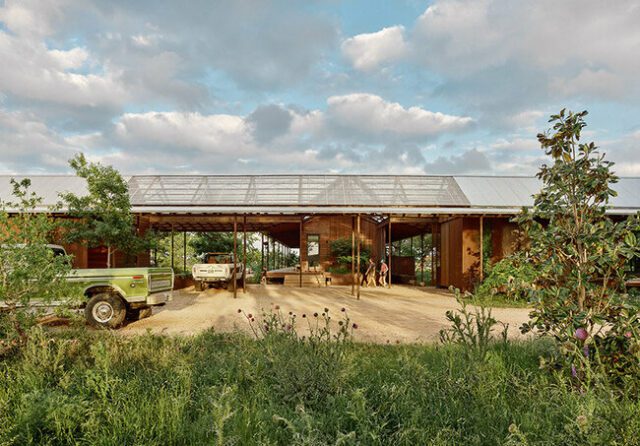

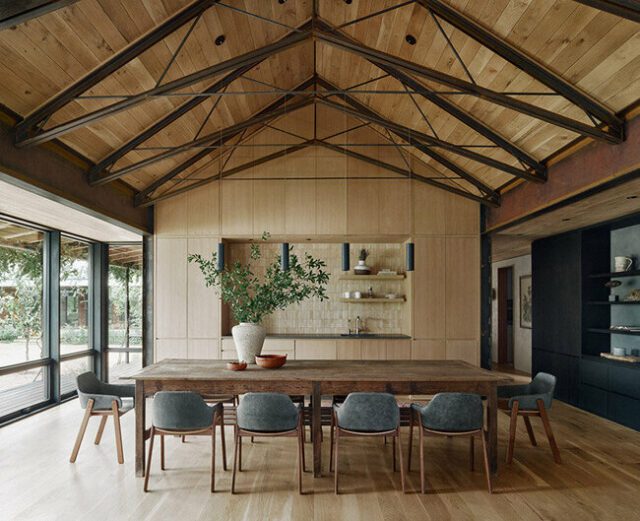
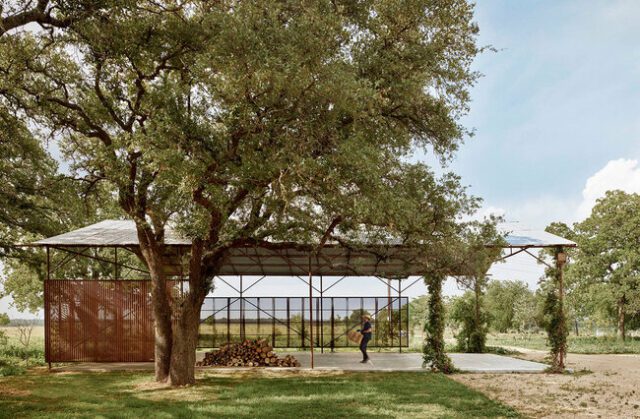
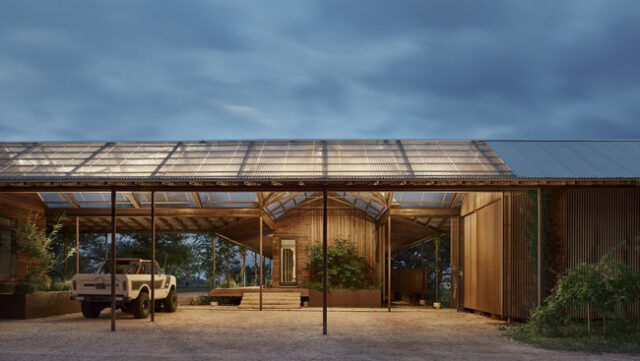

Perched majestically atop the cliffs of Bali, the Private Jet Villa stands as a testament to architectural ingenuity and repurposing creativity. Once a Boeing 737 aircraft soaring the Indonesian skies, this luxurious abode now offers a unique living experience suspended 150 meters above sea level. Crafted by the skilled hands of Geometrium Studio, the villa seamlessly marries the sleek lines of aviation with the tranquility of its natural surroundings. From the moment one steps through the fuselage door, they are greeted by an interior that exudes elegance and comfort. Every corner of the villa tells a story of meticulous design and thoughtful utilization of space, from the bedroom nestled within the cockpit, complete with a jacuzzi, to the terraces extending from the wings, offering breathtaking views of the Balinese landscape.

Converting an aircraft into a cliffside villa posed numerous challenges, but Geometrium Studio rose to the occasion with innovative solutions and meticulous attention to detail. With limited space and unconventional dimensions to contend with, the studio ingeniously integrated curved walls, natural wood accents, and light tones to create an ambiance of serenity and sophistication. Mirrors strategically placed throughout the villa create an illusion of spaciousness, while original windows flood the interior with natural light, blurring the lines between indoor comfort and outdoor splendor. A floating staircase gracefully connects the various sections of the villa, leading from the living room and dining area to the wings, where terraces beckon residents to immerse themselves in the beauty of Bali’s rugged coastline. As night falls and stars blanket the sky, the Private Jet Villa stands as a testament to the boundless possibilities of architectural reinvention and the enduring allure of luxury living.
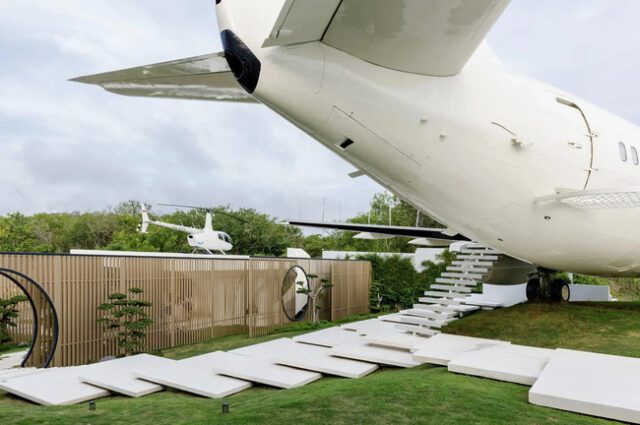

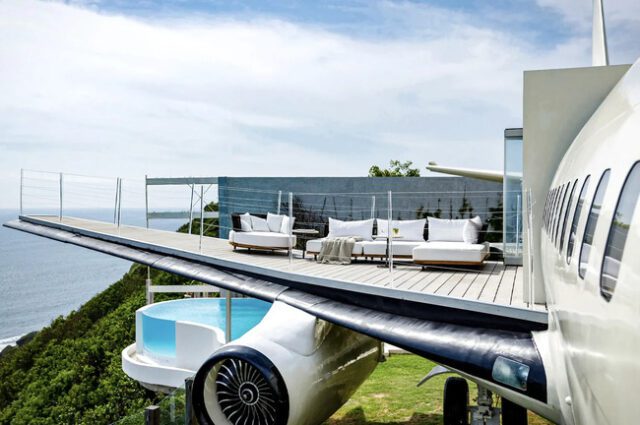
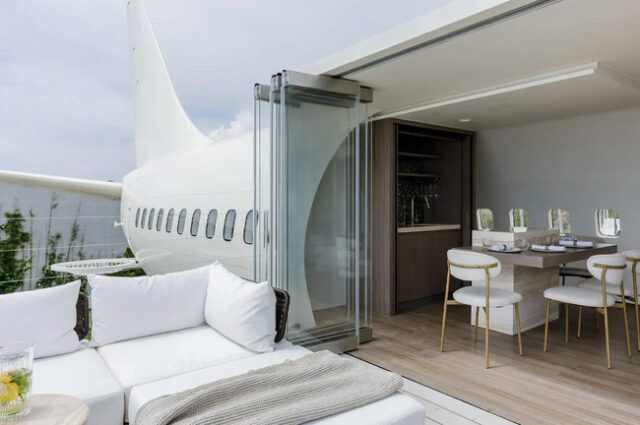
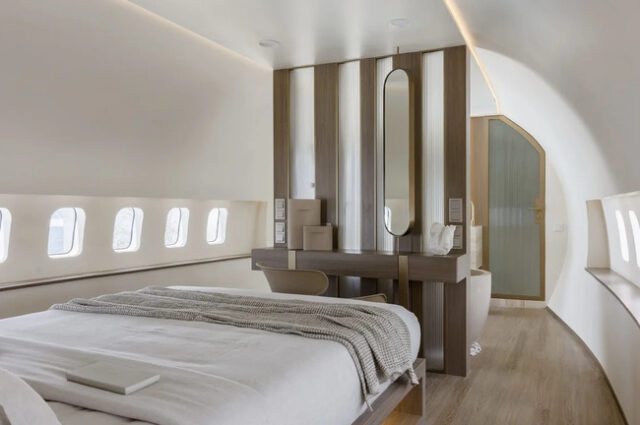
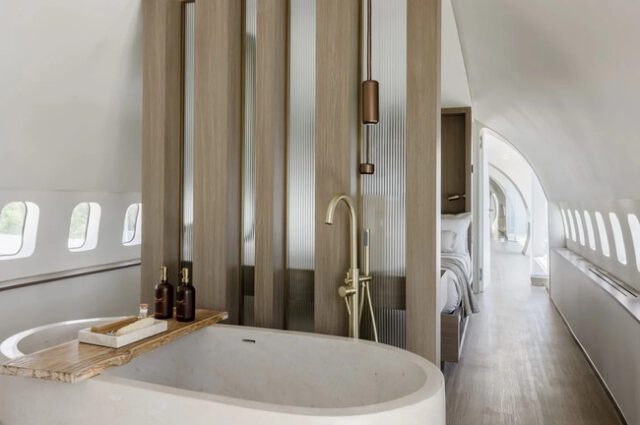
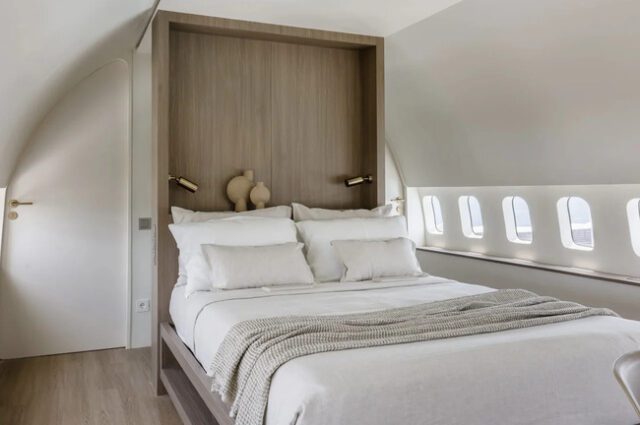
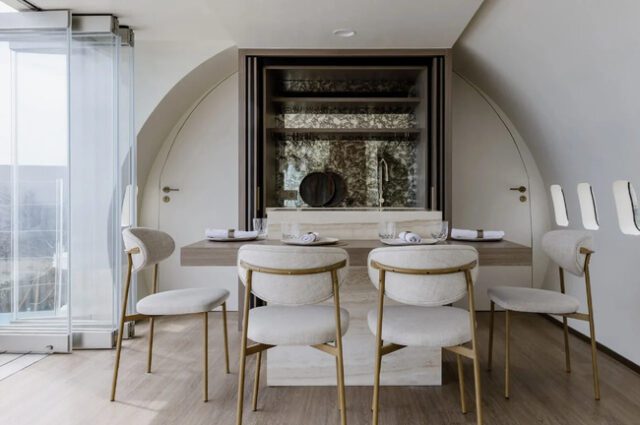
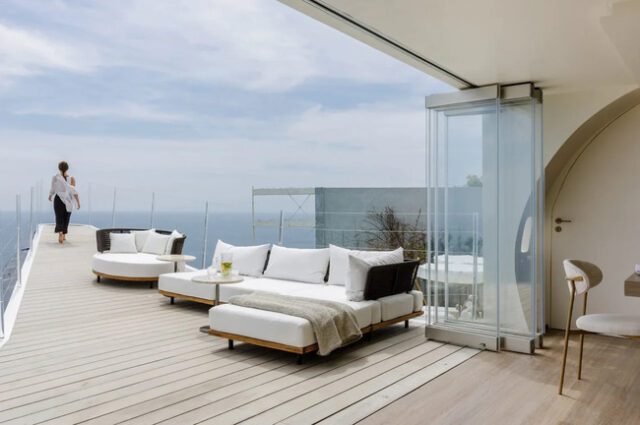
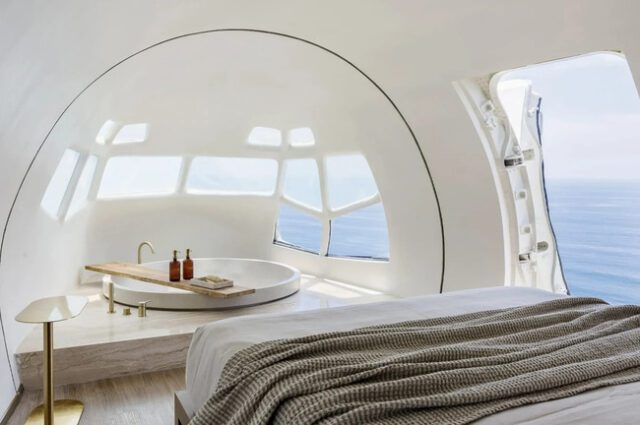
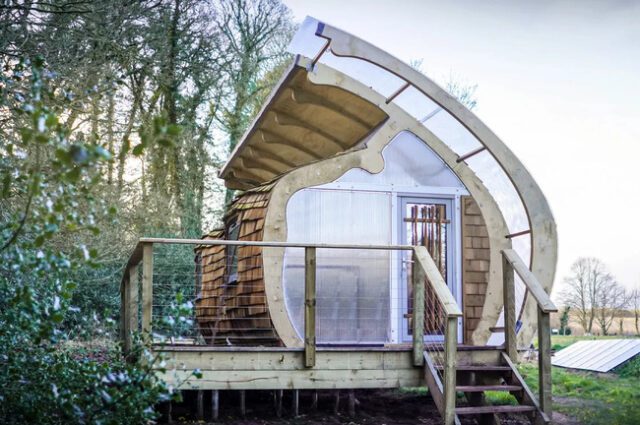
The Monocoque Cabin stands as a testament to the boundless creativity and ingenuity that can emerge from blending disparate inspirations. Drawing from the sleek monocoque structure of WWII aircraft, particularly the de Havilland Mosquito, British architect Peter Markos has fashioned a dwelling that transcends the conventional boundaries of tiny home design. This remarkable abode, born from Markos’ fascination with aerospace and automotive construction techniques, boasts a curving exterior reminiscent of its airborne muse, coupled with the resilience and efficiency of its monocoque design. Supported by the external skin akin to an eggshell, the Monocoque Cabin stands as a robust yet elegant retreat, harmoniously melding into its rural surroundings with a promise of longevity and grace as its timber materials weather over time.
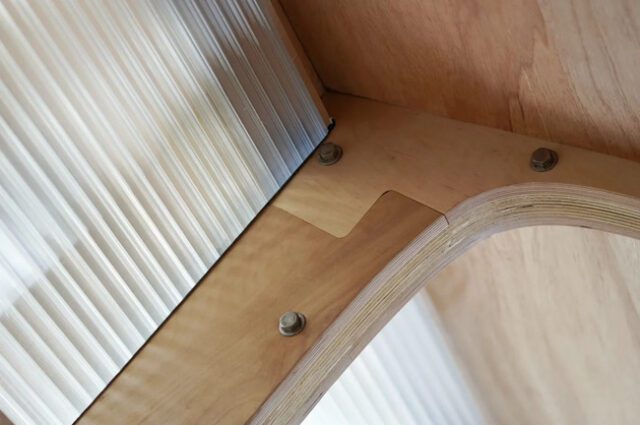
Beyond its striking exterior, the Monocoque Cabin offers a thoughtfully designed interior space that prioritizes both functionality and comfort within its compact dimensions. Stepping inside, one is greeted by a shared living room and kitchen area, adorned with simple yet tasteful furnishings that complement the home’s minimalist aesthetic. From the breakfast bar to the cozy sofa, every element has been carefully curated to maximize utility without sacrificing style. Seamlessly connected to this communal space lies a well-appointed bathroom and a spacious bedroom, offering all the essential comforts of modern living within the confines of its diminutive footprint. With its ability to run off-grid and the flexibility to be easily assembled and relocated, the Monocoque Cabin stands as a beacon of innovation, inviting us to rethink the possibilities of tiny home living in the modern age.
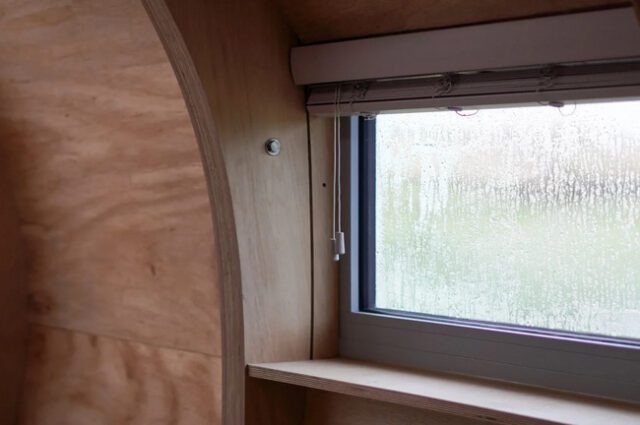
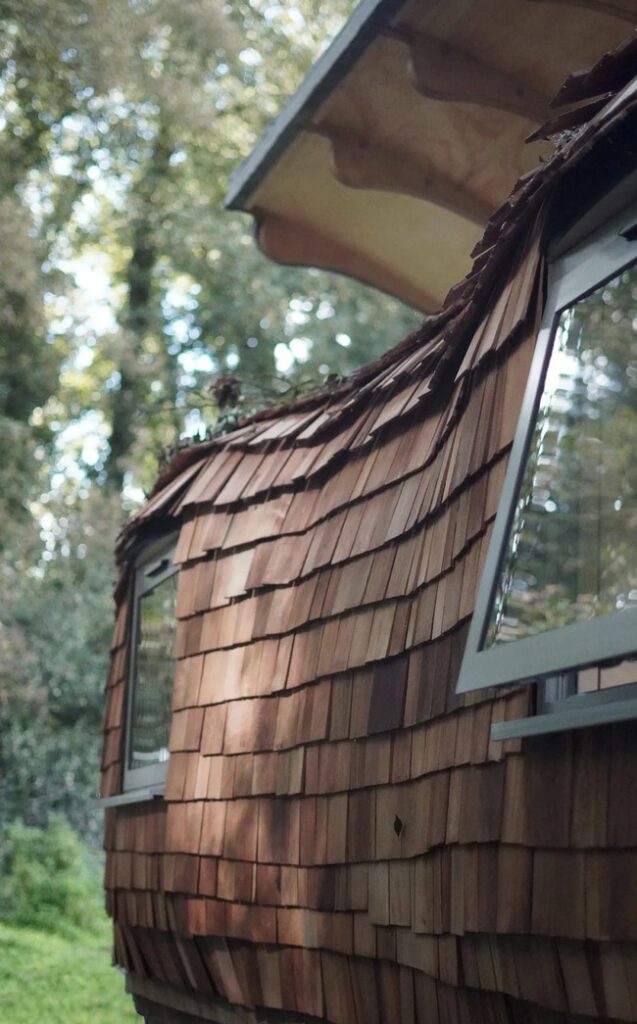
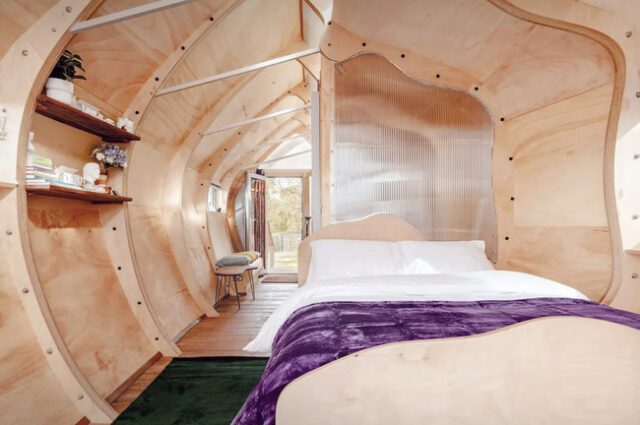
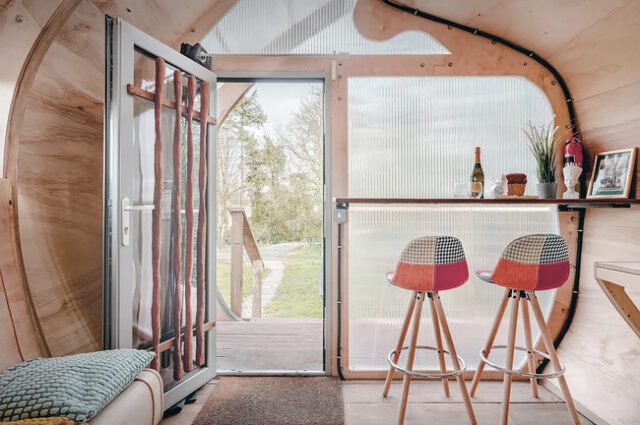
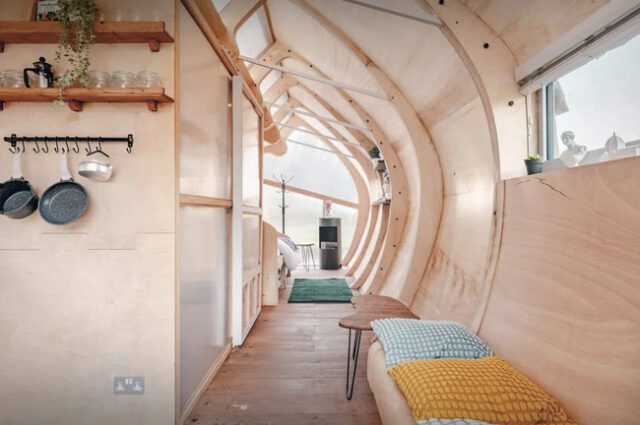

Jan Erik Waider’s stunning aerial photographs of Iceland’s glacier rivers offer a mesmerizing glimpse into the abstract beauty of nature’s artistry. Through his lens, Waider transforms the intricate patterns of Iceland’s braided river systems into captivating visual narratives. With a keen eye for composition and an adept use of drones and small planes, Waider captures the ethereal essence of these winding waterways. His series, Glacier River Blues, unveils the enigmatic allure of the rivers, initially resembling obscure markings on a canvas, yet revealing their origins and significance upon closer inspection. Waider’s exploration not only showcases the aesthetic marvel of Iceland’s rivers but also highlights their vital role in sustaining the ecosystem, as they carry essential nutrients from glaciers to the sea.
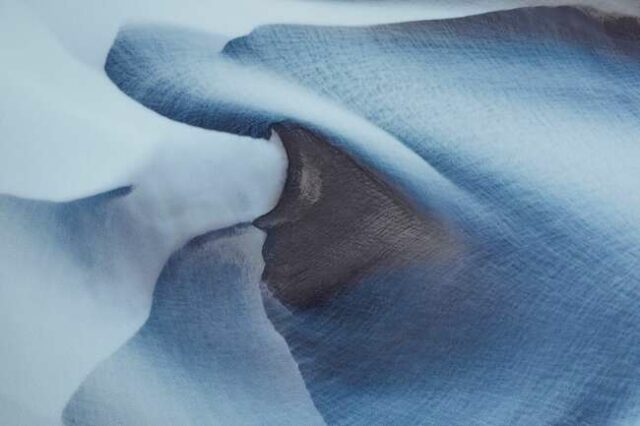
Behind the tranquil allure of Waider’s photographs lies a tale of dedication and perseverance. While his images exude serenity, Waider’s journey to capture them often entails rigorous planning and arduous expeditions. From scouring satellite imagery to navigating remote terrains and even piloting small planes, Waider’s commitment to his craft is evident in the breathtaking results. As he prepares to embark on a new adventure in Alaska, eager to uncover the glacial landscapes of the Last Frontier, Waider’s evocative imagery serves as an invitation to immerse oneself in the sublime beauty of nature’s grandeur. Follow his exploits on Instagram as he continues to unveil the world’s most captivating vistas, one mesmerizing photograph at a time.








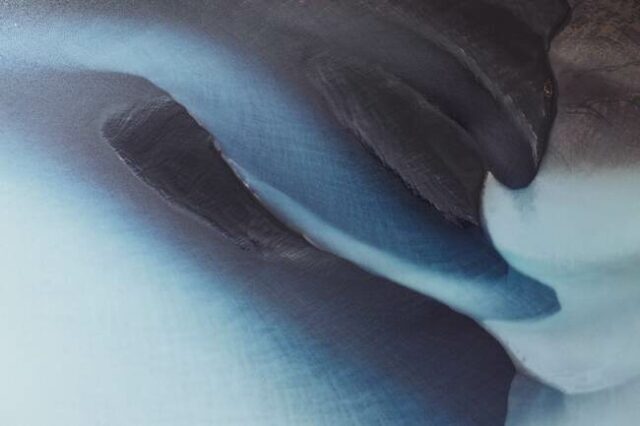

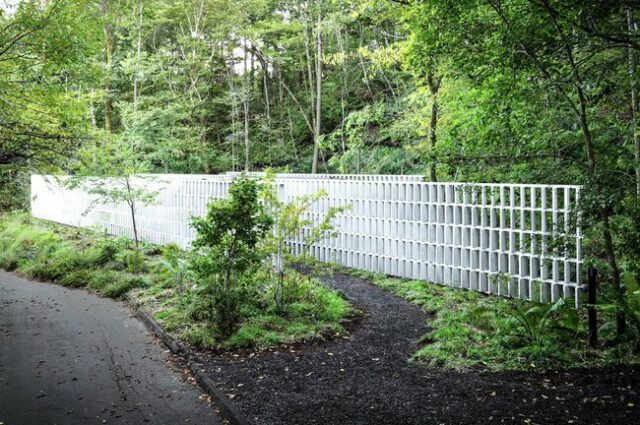
Nendo’s installation of a carbon-capturing wall within a contemporary Japanese home marks a significant stride towards sustainable architecture, addressing the pressing issue of carbon emissions associated with traditional concrete construction. Nestled in Japan’s Nagano Prefecture, the Block-Wall House exemplifies a fusion of innovation and eco-consciousness, boasting a sleek design that harmonizes with its natural surroundings. The strategic integration of glazing ensures both privacy and connectivity with the external environment, enhancing the occupants’ experience while minimizing energy consumption. At the heart of this architectural marvel lies the revolutionary CO2-SUICOM concrete, a collaborative creation by Kajima Corporation, Chugoku Electric Power Co, Denka, and Landes Co. This pioneering material not only upholds the structural integrity synonymous with concrete but also actively sequesters carbon dioxide, offering a beacon of hope in the fight against climate change.
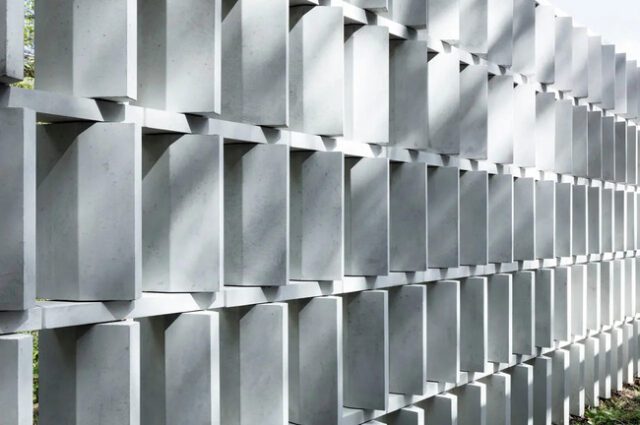
The transformative potential of CO2-SUICOM lies in its unique composition, where γ-C2S replaces over half of the traditional cement, catalyzing a novel hardening process through interaction with atmospheric CO2. This innovative approach not only mitigates carbon emissions during production but also facilitates the capture and permanent storage of CO2 within the concrete matrix. By leveraging existing carbon-heavy infrastructure such as thermal power plants, the deployment of carbon sequestration chambers further enhances the environmental impact of CO2-SUICOM, turning emissions into opportunities for sustainable construction. While initial costs may present a barrier, ongoing efforts to optimize production processes signal a promising trajectory toward affordability, ensuring that this eco-friendly concrete paves the way for a greener future in the realm of architecture and beyond.
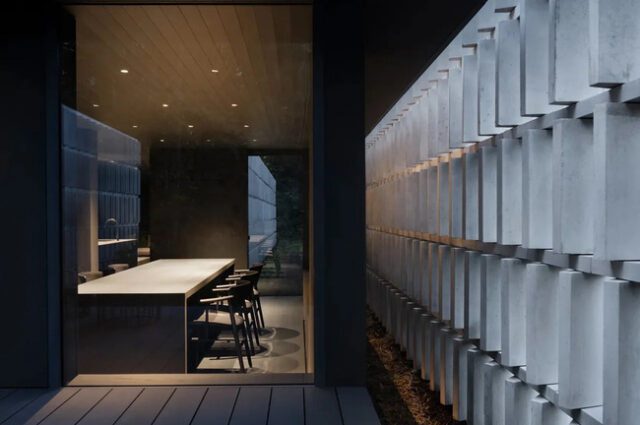
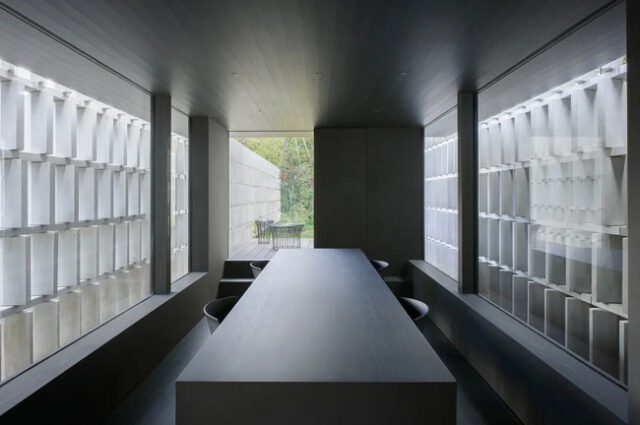

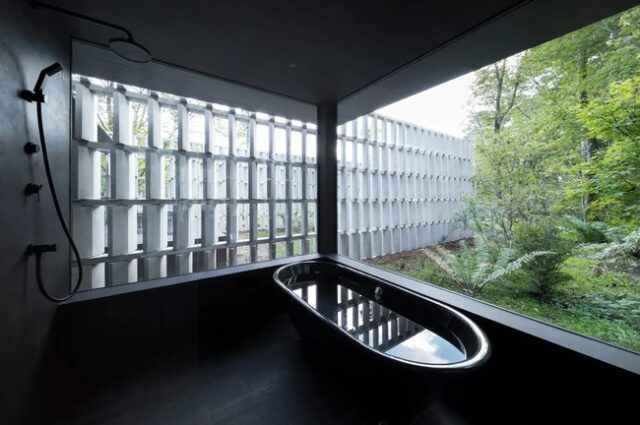

As solar energy continues to illuminate pathways toward sustainability, Germans are now embracing a new trend: solar balconies. With an impressive 400,000 households already harnessing the power of sunlight from their verandas and balconies, this innovation marks a significant milestone on the 70th anniversary of solar cells’ mainstream adoption. In the first quarter of 2024 alone, an additional 50,000 photovoltaic (PV) devices were seamlessly integrated into Central European homes. The appeal lies not only in their ease of installation—many opt for DIY setups—but also in their efficiency. Surprisingly, during the winter months, the shallow angle of the sun in the Northern Hemisphere often results in balcony panels outperforming their rooftop counterparts.
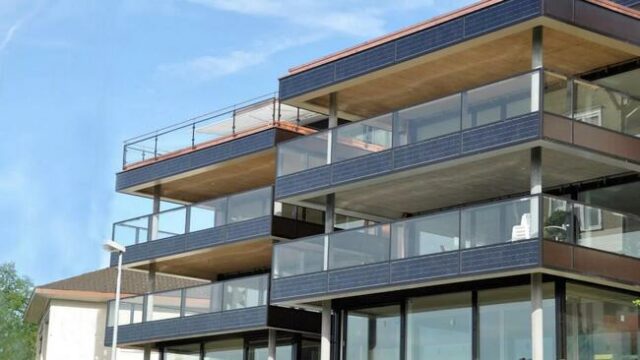
The rise of solar balconies represents more than just a technological shift; it reflects a cultural embrace of renewable energy in Germany. With the country leading Europe in solar power generation, the solar balcony trend exemplifies a broader movement toward energy empowerment. Beyond reducing electricity bills and contributing to environmental sustainability, these installations offer a sense of participation in the ongoing energy transition. While subsidies in some German states ease the financial burden, weighing in at over 50 pounds, installation demands utmost caution. Yet, as Europeans explore increasingly creative avenues for solar integration, from cemeteries to SUV roofs, the future of renewable energy appears ever more promising and versatile.

What’s secretive, pretends to be a stick, and is sometimes confused with a mythical creature? The answer lies in the enigmatic presence of the Australasian bittern, a bird that has stealthily reclaimed its habitat in Tasmania after a 40-year absence. This remarkable return marks a triumph over the ecological damage wrought by damming projects in the mid-20th century, which disrupted the delicate balance of the Lagoon of Islands. Once drowned by rising water levels and submerged islands, the wetland ecosystem now teems with life, echoing with the haunting calls of the bittern, a species that has long been shrouded in mystery.

With a haunting cry reminiscent of the mythical Bunyip, a creature of Aboriginal legend, the Australasian bittern embodies a certain mystique. Though not a mythical beast itself, this elusive bird employs cunning camouflage, resembling a cluster of reeds as it stands motionless, blending seamlessly into its surroundings. The return of the bittern to Tasmania signifies more than just the resurgence of a single species; it heralds the restoration of an entire ecosystem. As birders and scientists alike celebrate this milestone, the Lagoon of Islands stands as a testament to the resilience of nature and the power of restoration efforts to heal the scars of human intervention.



































































